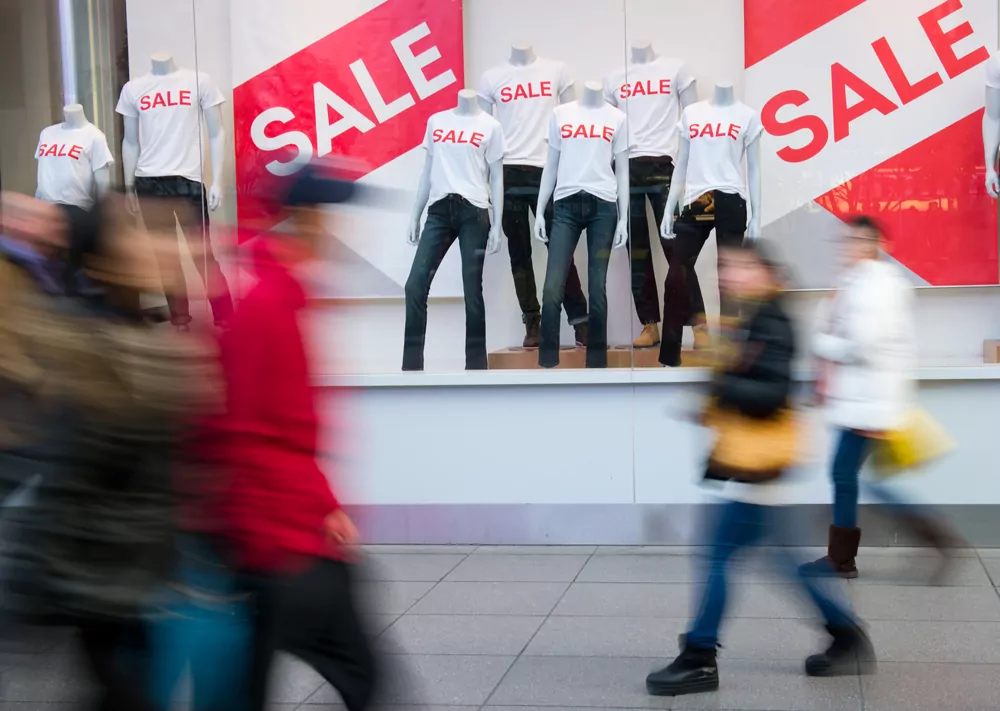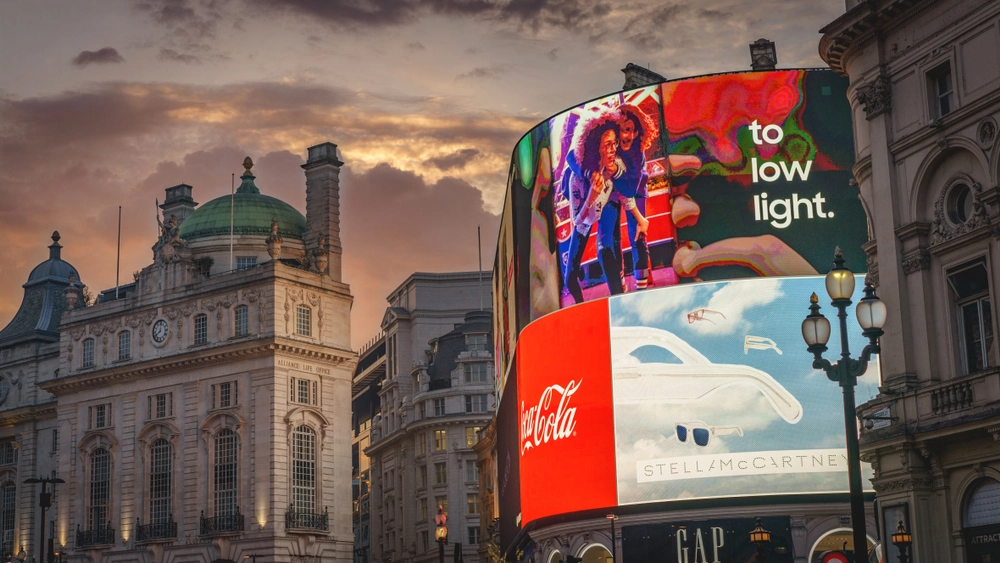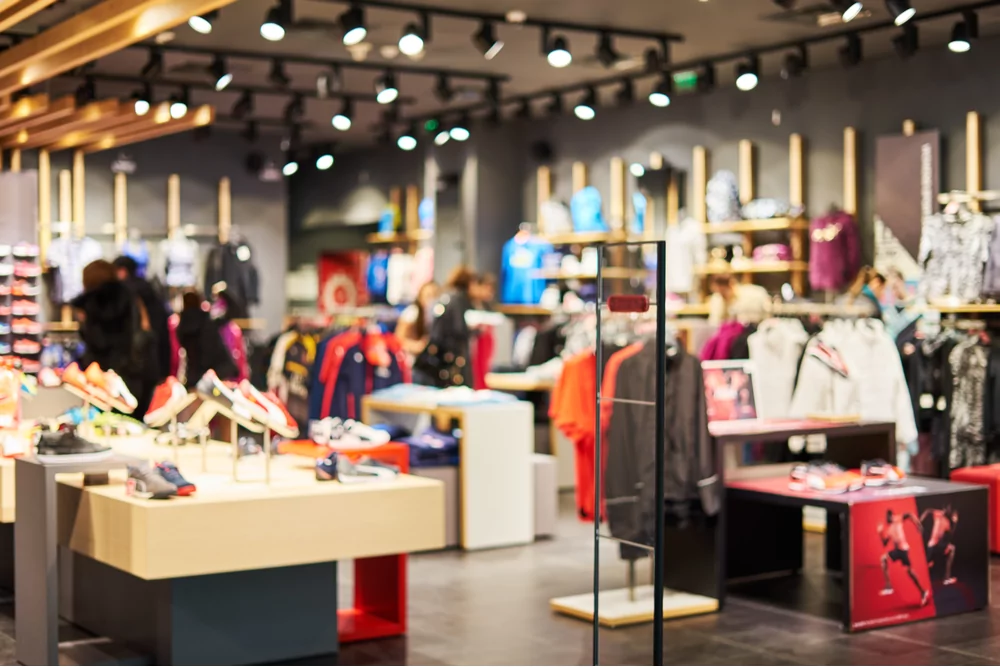
Retail Reduced - 5 big themes for the retail sector in December 2022

By Jake Christophersen, Alastair Nuttall
22 Dec 2022 | 1 minute read
In this month's review of trends in the retail and consumer sector, we look at:
- The future of cash and implications for the retail sector
- Trading performance over the festive period
- Augmented reality in retail
- How retailers are turning to real estate to bolster their balance sheets
- What retailers can do to support employee wellbeing in 2023
Should retailers continue to take cash? The future of cash in the retail sector is a question that has continued to crop up throughout 2022. According to survey results just released by the British Retail Consortium, cash accounted for only 15% of retail transactions in 2021, halving from 30% in 2020. This was driven primarily by the pandemic and an increase in online transactions. Cash payments may fall to as little as 10 per cent of all UK transactions within the next 15 years, according to a recent study by Link.
Handling cash comes with logistical challenges and costs, but cash remains an important store of value for many. According to the BRC’s Payments Survey per transaction cash remains cheaper for retailers than accepting card payments. In the economy overall cash use has recovered since the end of pandemic lockdowns (the Bank of England reports that 73% of consumers said they used cash in January 2022, an increase from around half of consumers in mid-2020). Over eight million adults in the UK (17% of the population) rely on cash to make payments every day. The FCA’s Financial Lives survey in 2020 found that 46% of the digitally excluded, 31% of those with no educational qualifications, and 26% of those in poor health rely on cash to a ‘great or very great extent’. Additionally, 1.7 million people in the UK do not have a bank account, and 90% of them are on low incomes and have low overall household income. There are further practical reasons for the popular use of cash, with many finding it easier to budget with what is in their pocket during a time of rising living costs.
The closure of multiple bank branches and post offices has caused problems for those people that primarily use cash in rural areas. Fortunately, newly created pilot projects, like the community bank ‘hub’ in Rochford, have seen banks collaborate to provide bank staff on a rotating basis at hubs operated by postmasters. This comes as a welcome relief to local businesses in these areas too, as many rely on cash paying customers. The government is currently legislating to protect the use of cash as part of the Financial Services and Markets Bill 2022 which will allow the FCA to have regulatory oversight of cash service provisions and designate the firms responsible for meeting geographic requirements. The third reading of the Bill in the Lords is due 10 January 2023.
At first glance, trading performance on Black Friday appeared to have picked up compared to the previous year, with total sales rising by 4.2%. However, the British Retail Consortium (BRC) has since clarified that sales volumes were in fact down by 5.9% against last year and the higher percentage resulted from the increase in the cost of goods caused by inflation. The inflation rate was 10.7% in November, down from 11.1% in October.
Much of the spending related to winter items, such as coats and hot water bottles, in preparation for the cold snap and with a view to reducing costs of ever-increasing utility bills. Sales of toys and other common festive goods were down this year. A survey carried out on over 2,000 adults suggested that about half of the participants will be reducing spending this year, with 57% cutting down on gifts and 45% reducing social activities during the festive period.
The Financial Times reports that the data obtained over the October-November period suggest that the economy has entered a recession which commentators predict could last until the third quarter of 2023.
One bit of positive news is the consumer confidence index rose to -42 in December, representing a 2-point increase, but it remains below -40 for the eighth month in a row. That said, the rail strikes throughout December have reduced footfall, having the greatest impact on high streets and central London shops, while postal strikes have fuelled concerns about not receiving ordered goods before Christmas.
Figures looked more promising over the last weekend before Christmas, where shoppers were expected to spend in the region of £2.87 billion. The Sunday of that weekend did considerably well, being dubbed ‘Stampede Sunday’ by one newspaper, due to the increased footfall over the weekend and the £3million-a-minute spending spree that took place. The heightened spending was attributed to a mixture of things, such as worries that online orders would not be posted on time, as well as additional vouchers / discounts being put on by retailers in a bid to drive last-minute sales. The increased footfall has been good for independent retailers, some of which expect sales to continue in the same fashion up to Christmas.
It will be interesting to see the data that emerge after the Christmas period and whether the last-minute festive spending is enough to turn around the relatively bleak messages sent by the fall in Black Friday sales in November. Watch this space.
Retail brands are embracing the digital shift, by fostering augmented reality (AR) experiences as a tool to influence customer buying decisions and enrich the relationship between the consumer and brand.
Snap and H&M’s recent partnership provides shoppers with 3 new immersive AR experiences to try on digital fashion pieces using Snap’s camera technology, increasing H&M community’s accessibility into the digital world – AR lenses have been used by over 250 million Snapchat users, more than 5 billion times since January.
Similarly, online retail giant Very is offering virtual makeup try-on features on its app, using a form of AR known as ModiFace technology, to improve its tech offering. This virtual try-on feature follows the likes of luxury makeup brands Charlotte Tilbury and Nars, who have both recently ventured into the metaverse, through Charlotte’s Virtual Beauty Gifting Wonderland, an immersive digital island store, and Nars’ new ‘meta-human’ avatar beauty ambassadors for digital projects.
Brands are also using AR to create memorable in-store experiences. JD Sports has used AR in partnership with Snapchat to turn its Oxford Street store window into an interactive game. Shoppers scan a code on the store window which enables them to play an interactive claw grabber game through their phones displayed in AR on the store window.
AR is an interesting development in the retail sphere, particularly during the holiday season where online shopping is prevalent. In the coming years, we could potentially be seeing the AR trend accelerate if the metaverse proves to be a success amongst retail consumers.
Retailers are turning to their property assets to generate cash. Morrisons and Wilko are among those who have sold and leased-back assets recently. Fenwick has sold its historic New Bond Street store for £430m in order to put the retailer on a stronger financial footing.
Taking a different approach focussed on leveraging property assets to generate an income stream, John Lewis is partnering with investment companies to convert vacant or underutilised land for rental homes. The retailer hopes that by 2030 40% of profits will come from outside of retail. It plans to build over Waitrose shops in Bromley and West Ealing in Greater London, as well as replacing a vacant John Lewis warehouse in Mill Lane, Reading. Reviewing property portfolios to see if assets may be disposed of or put to better use is common practice in retail. But John Lewis’ approach is distinctive because the retailer wants to maintain an active role through the process, acting as developer and taking an ongoing role in managing the properties. The retailer regards this project as part of its social as well as commercial mission and hopes its rental homes will raise standards in rental properties.
John Lewis’ rental homes plan is an exciting example of how retailers are innovating and collaborating to thrive in currently very challenging trading conditions. Retailers will however need to take care to avoid losing sight of their core business and brand propositions when pursuing diversification strategies.
Employee wellbeing is suffering across the economy because of financial concerns. A recent survey by the Financial Times and insurer Vitality points to a surge in mental ill health and anxiety and a rise in sickness absences and “presenteeism” or unproductive working. The Mental Health Foundation warns the UK population is experiencing widespread levels of stress, anxiety and hopelessness in response to financial concerns.
Retail employers have already made significant efforts this year to support their employees. This effort needs to continue into 2023. In a recent article, we review what retailers can do to support employee wellbeing in 2023.
Should retailers continue to take cash? The future of cash in the retail sector is a question that has continued to crop up throughout 2022. According to survey results just released by the British Retail Consortium, cash accounted for only 15% of retail transactions in 2021, halving from 30% in 2020. This was driven primarily by the pandemic and an increase in online transactions. Cash payments may fall to as little as 10 per cent of all UK transactions within the next 15 years, according to a recent study by Link.
Handling cash comes with logistical challenges and costs, but cash remains an important store of value for many. According to the BRC’s Payments Survey per transaction cash remains cheaper for retailers than accepting card payments. In the economy overall cash use has recovered since the end of pandemic lockdowns (the Bank of England reports that 73% of consumers said they used cash in January 2022, an increase from around half of consumers in mid-2020). Over eight million adults in the UK (17% of the population) rely on cash to make payments every day. The FCA’s Financial Lives survey in 2020 found that 46% of the digitally excluded, 31% of those with no educational qualifications, and 26% of those in poor health rely on cash to a ‘great or very great extent’. Additionally, 1.7 million people in the UK do not have a bank account, and 90% of them are on low incomes and have low overall household income. There are further practical reasons for the popular use of cash, with many finding it easier to budget with what is in their pocket during a time of rising living costs.
The closure of multiple bank branches and post offices has caused problems for those people that primarily use cash in rural areas. Fortunately, newly created pilot projects, like the community bank ‘hub’ in Rochford, have seen banks collaborate to provide bank staff on a rotating basis at hubs operated by postmasters. This comes as a welcome relief to local businesses in these areas too, as many rely on cash paying customers. The government is currently legislating to protect the use of cash as part of the Financial Services and Markets Bill 2022 which will allow the FCA to have regulatory oversight of cash service provisions and designate the firms responsible for meeting geographic requirements. The third reading of the Bill in the Lords is due 10 January 2023.
At first glance, trading performance on Black Friday appeared to have picked up compared to the previous year, with total sales rising by 4.2%. However, the British Retail Consortium (BRC) has since clarified that sales volumes were in fact down by 5.9% against last year and the higher percentage resulted from the increase in the cost of goods caused by inflation. The inflation rate was 10.7% in November, down from 11.1% in October.
Much of the spending related to winter items, such as coats and hot water bottles, in preparation for the cold snap and with a view to reducing costs of ever-increasing utility bills. Sales of toys and other common festive goods were down this year. A survey carried out on over 2,000 adults suggested that about half of the participants will be reducing spending this year, with 57% cutting down on gifts and 45% reducing social activities during the festive period.
The Financial Times reports that the data obtained over the October-November period suggest that the economy has entered a recession which commentators predict could last until the third quarter of 2023.
One bit of positive news is the consumer confidence index rose to -42 in December, representing a 2-point increase, but it remains below -40 for the eighth month in a row. That said, the rail strikes throughout December have reduced footfall, having the greatest impact on high streets and central London shops, while postal strikes have fuelled concerns about not receiving ordered goods before Christmas.
Figures looked more promising over the last weekend before Christmas, where shoppers were expected to spend in the region of £2.87 billion. The Sunday of that weekend did considerably well, being dubbed ‘Stampede Sunday’ by one newspaper, due to the increased footfall over the weekend and the £3million-a-minute spending spree that took place. The heightened spending was attributed to a mixture of things, such as worries that online orders would not be posted on time, as well as additional vouchers / discounts being put on by retailers in a bid to drive last-minute sales. The increased footfall has been good for independent retailers, some of which expect sales to continue in the same fashion up to Christmas.
It will be interesting to see the data that emerge after the Christmas period and whether the last-minute festive spending is enough to turn around the relatively bleak messages sent by the fall in Black Friday sales in November. Watch this space.
Retail brands are embracing the digital shift, by fostering augmented reality (AR) experiences as a tool to influence customer buying decisions and enrich the relationship between the consumer and brand.
Snap and H&M’s recent partnership provides shoppers with 3 new immersive AR experiences to try on digital fashion pieces using Snap’s camera technology, increasing H&M community’s accessibility into the digital world – AR lenses have been used by over 250 million Snapchat users, more than 5 billion times since January.
Similarly, online retail giant Very is offering virtual makeup try-on features on its app, using a form of AR known as ModiFace technology, to improve its tech offering. This virtual try-on feature follows the likes of luxury makeup brands Charlotte Tilbury and Nars, who have both recently ventured into the metaverse, through Charlotte’s Virtual Beauty Gifting Wonderland, an immersive digital island store, and Nars’ new ‘meta-human’ avatar beauty ambassadors for digital projects.
Brands are also using AR to create memorable in-store experiences. JD Sports has used AR in partnership with Snapchat to turn its Oxford Street store window into an interactive game. Shoppers scan a code on the store window which enables them to play an interactive claw grabber game through their phones displayed in AR on the store window.
AR is an interesting development in the retail sphere, particularly during the holiday season where online shopping is prevalent. In the coming years, we could potentially be seeing the AR trend accelerate if the metaverse proves to be a success amongst retail consumers.
Retailers are turning to their property assets to generate cash. Morrisons and Wilko are among those who have sold and leased-back assets recently. Fenwick has sold its historic New Bond Street store for £430m in order to put the retailer on a stronger financial footing.
Taking a different approach focussed on leveraging property assets to generate an income stream, John Lewis is partnering with investment companies to convert vacant or underutilised land for rental homes. The retailer hopes that by 2030 40% of profits will come from outside of retail. It plans to build over Waitrose shops in Bromley and West Ealing in Greater London, as well as replacing a vacant John Lewis warehouse in Mill Lane, Reading. Reviewing property portfolios to see if assets may be disposed of or put to better use is common practice in retail. But John Lewis’ approach is distinctive because the retailer wants to maintain an active role through the process, acting as developer and taking an ongoing role in managing the properties. The retailer regards this project as part of its social as well as commercial mission and hopes its rental homes will raise standards in rental properties.
John Lewis’ rental homes plan is an exciting example of how retailers are innovating and collaborating to thrive in currently very challenging trading conditions. Retailers will however need to take care to avoid losing sight of their core business and brand propositions when pursuing diversification strategies.
Employee wellbeing is suffering across the economy because of financial concerns. A recent survey by the Financial Times and insurer Vitality points to a surge in mental ill health and anxiety and a rise in sickness absences and “presenteeism” or unproductive working. The Mental Health Foundation warns the UK population is experiencing widespread levels of stress, anxiety and hopelessness in response to financial concerns.
Retail employers have already made significant efforts this year to support their employees. This effort needs to continue into 2023. In a recent article, we review what retailers can do to support employee wellbeing in 2023.





























































